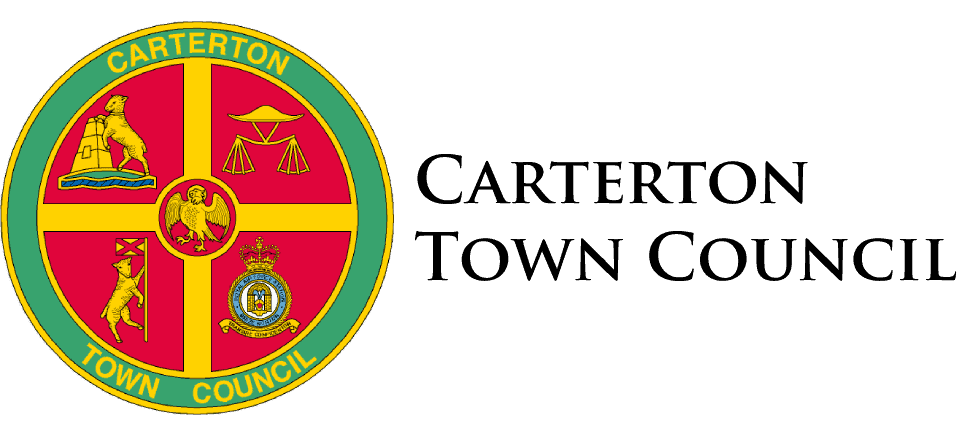
Carterton may well have seen earlier settlements than our recent town. Bronze age flint tools have been found in the area and a round barrow, now levelled, suggests that there may have been an Iron Age settlement near the crossroads. Roman settlements have been found at Alvescot and Kencot.
Much of what is now the northern part of the town was owned by the Moleyns family from at least 1369, but in 1429 William Lord Moleyns was killed at the siege of Orleans and the land passed to the Hungerford family. During the medieval period the main road through Carterton was one of the most important in the country, taking trains of pack horses laden with Cotswold wool over Radcot Bridge and on to Southampton for export to the weaving centres of Europe.
In the 1770s the land was acquired by the Duke of Marlborough. Rock Farm was built in about 1823 as a typical Georgian farm complex, with a yard in front and two matching threshing barns, one of which is now the Catholic Church.
The pattern of the present settlement dates from 1894 when part of the estate was sold to Homesteads Limited whose director was William Carter.
The land was divided into plots of 6 acres and sold for £20 an acre with bungalows costing from £120. Many of the settlers were retired soldiers and refugees from the towns. Carterton soon made its name in the market gardening world. Black grapes from Frenchester Nurseries and the famous Carterton tomatoes were sold at Covent Garden Market. There are still a few of the original tin or asbestos settlers’ bungalows in the town. The village flourished, with a tin mission church and the first large building – The Emporium – being built in 1911 with an upstairs room for meetings and dances. This later became the Co-op, then The Golden Eagle, then Ye Olde Aviator, and now back to The Golden Eagle again!
Construction work on the airfield began in 1935. Wartime saw the rapid growth of the base. Following a raid which destroyed 46 aircraft, the remainder were dispersed round the village and one hangar still exists as a garage on the Alvescot Road. From 1950 to 1965 the camp was to be the home of the USAF bomber wings. The RAF returned in 1965 and undertook a large building programme making RAF Brize Norton the main transport base in the country.
With the growth of the village, the small mission church at the central crossroads was replaced in 1963 by the church of St. John the Evangelist. The link with the mother church of St. Mary’s at Black Bourton was kept alive by the donation of one of the bells from the tower. This was made by H. Knight of Reading and is dated 1619.

